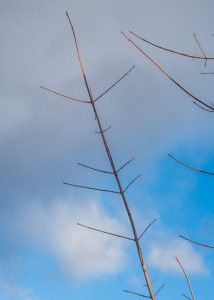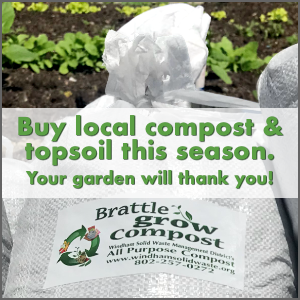Emerald ash borer is here. Infestation has been verified 20 miles away. It is a killer; now is the time to vaccinate any ash trees you want to save, because by the time you find the pretty green insect on your tree, or notice the damage, it will be too late. Infested trees die from the top of the crown down; by the time you can see from the ground that you have damage, the tree will be too far gone to save.
How do I know if I have ash trees?
Ash trees are best identified by branch and bud arrangement: Branches and buds grow directly opposite each other — they are not staggered. When looking for opposite branching in trees, consider that buds or limbs may die. Not every branch will have an opposite mate. You can see pictures and find identification help at https://ento.psu.edu/extension/trees-shrubs/emerald-ash-borer/factsheets/EAB2942.pdf
If you have ash trees that you want to save, contact a certified pesticide applicator to inject a systemic insecticide directly into the tree’s trunk. Systemic chemicals are transported within the vascular system of the tree from the roots or trunk to the branches and leaves. Insecticides applied to the soil, bark surface, or foliage are NOT recommended due to their increased potential for chemical exposure. Trunk injections reduce hazards due to insecticide drift away from the site, and are less likely to impact beneficial organisms.
Look for a Certified Arborist at http://www.treesaregood.org/findanarborist/findanarborist
How much does it cost to vaccinate a tree?
The cost of pesticide application will depend on the size of the tree. An arborist certified to apply pesticides can provide an accurate estimate. Expect to pay around $190-$285 to protect a 19” diameter tree (one you can just get your arms around) for 2 or 3 years’ protection (low-end estimate from http://www.urbantreealliance.org/eab-costs/).
Don’t delay too long. If you wait to act until the tree is dead or dying, expect to pay close to $1000 to have a medium-sized tree removed and the stump ground up. This is only an estimate. The cost of tree removal is widely variable depending on accessibility, obstacles, tree condition, and other characteristics. There is a calculator at http://www.urbantreealliance.org/eab-costs/
Because of the increased risks involved with removing standing dead trees, the cost of removing an ash tree that has already succumbed to EAB may be upwards of double the cost of removing a live ash tree. It is recommended that infested wood be dealt with promptly, on site: burned, chipped, or buried, as the chance of spreading the infestation is great. Infested ash firewood should not be moved.
Are the chemicals environmentally responsible?
Products that contain emamectin benzoate and azadirachtin are recommended. Emamectin benzoate lasts longer, and is generally more effective for large ash trees, than other products. It controls EAB for at least two years. Azadirachtin is effective for two years when EAB populations are low but must be injected yearly when EAB populations are high. Emamectin benzoate and specific formulations of imidacloprid are injected directly into the base of the tree trunk. They are systemic insecticides, transported within the vascular system of the tree from the roots and trunk to the branches and leaves. This reduces hazards such as drift of pesticide to non-target sites and applicator exposure that can be associated with spraying trees with broad-spectrum insecticides, and has less impact on beneficial insects and other non-target organisms.
More information at http://www.emeraldashborer.info/documents/Potential_Side_Effects_of_EAB_Insecticides_FAQ.pdf
What is the Town doing about town trees?
Brattleboro’s Tree Advisory Board, in conjunction with Vermont’s Department of Urban and Community Forestry have located and noted ash trees on public property and within the town’s right of way for the downtown and some of the urban sections of Brattleboro. Many of the more important ash trees were treated to protect them from the emerald ash borer in the spring of 2018. More public ash trees will be vaccinated this coming spring.
Youth can help
Meanwhile, the Vermont Urban and Community Forestry Program is partnering with the Young Writers Project to raise awareness about emerald ash borer (EAB) and its impact on Vermont forests and communities. Youth are encouraged to submit an original work of 750 words as a persuasive essay, piece of prose or poetry that aligns with the Invasives-Challenge prompts. Submissions are due Friday, March 15th. Winners will receive a cash prize and are invited to read their work at the annual Vermont Arbor Day Conference. https://youngwritersproject.org/node/26361






Save your ash
I was told that the extreme cold in the midwest might have killed some of these invasive off over there. One can hope!
It would be nice to find a way to save the ash trees. We’re using ash as a source of heat, and it burns nicely. It would be a shame to lose it as a fuel source. Alas, we might only have them around a few more years.